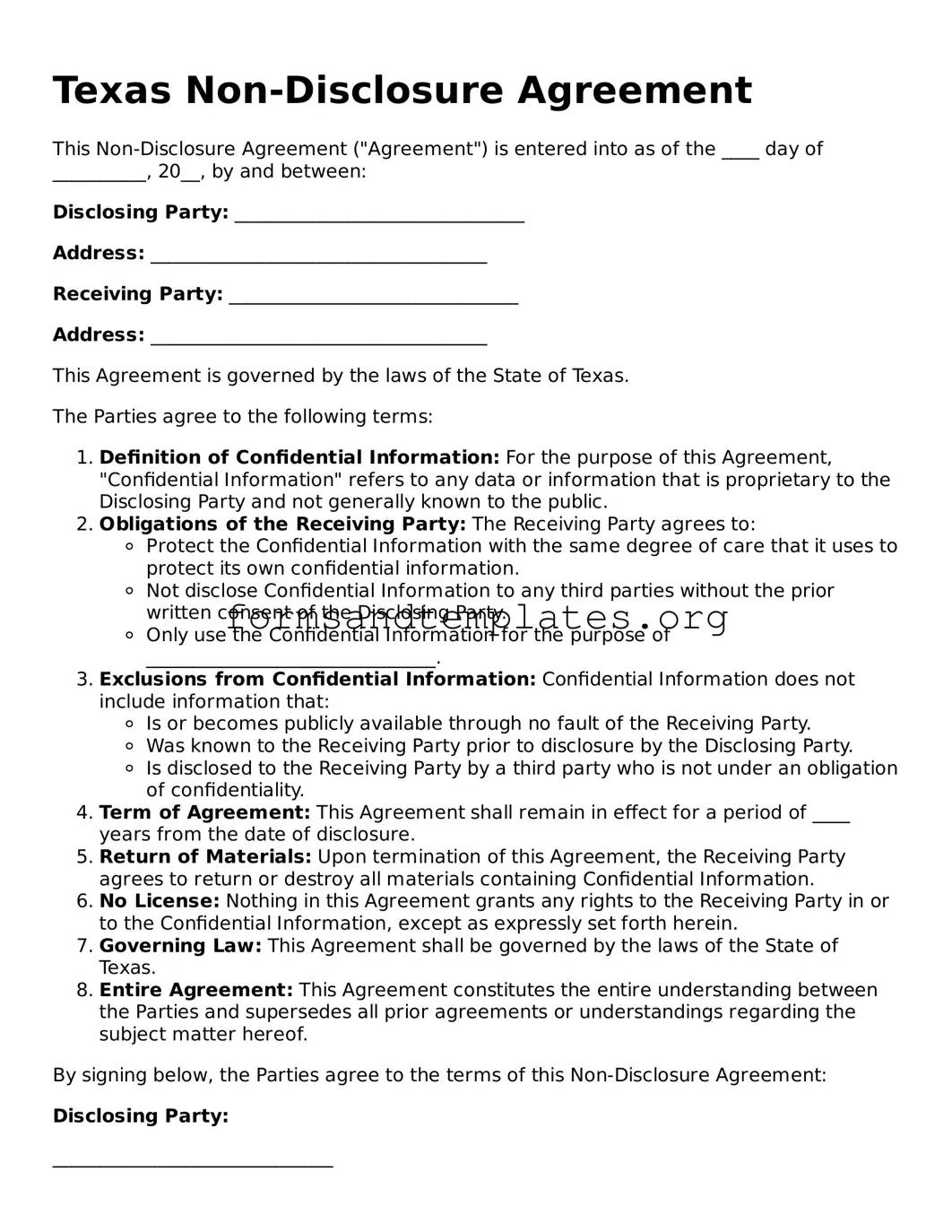Texas Non-Disclosure Agreement
This Non-Disclosure Agreement ("Agreement") is entered into as of the ____ day of __________, 20__, by and between:
Disclosing Party: _______________________________
Address: ____________________________________
Receiving Party: _______________________________
Address: ____________________________________
This Agreement is governed by the laws of the State of Texas.
The Parties agree to the following terms:
- Definition of Confidential Information: For the purpose of this Agreement, "Confidential Information" refers to any data or information that is proprietary to the Disclosing Party and not generally known to the public.
- Obligations of the Receiving Party: The Receiving Party agrees to:
- Protect the Confidential Information with the same degree of care that it uses to protect its own confidential information.
- Not disclose Confidential Information to any third parties without the prior written consent of the Disclosing Party.
- Only use the Confidential Information for the purpose of _______________________________.
- Exclusions from Confidential Information: Confidential Information does not include information that:
- Is or becomes publicly available through no fault of the Receiving Party.
- Was known to the Receiving Party prior to disclosure by the Disclosing Party.
- Is disclosed to the Receiving Party by a third party who is not under an obligation of confidentiality.
- Term of Agreement: This Agreement shall remain in effect for a period of ____ years from the date of disclosure.
- Return of Materials: Upon termination of this Agreement, the Receiving Party agrees to return or destroy all materials containing Confidential Information.
- No License: Nothing in this Agreement grants any rights to the Receiving Party in or to the Confidential Information, except as expressly set forth herein.
- Governing Law: This Agreement shall be governed by the laws of the State of Texas.
- Entire Agreement: This Agreement constitutes the entire understanding between the Parties and supersedes all prior agreements or understandings regarding the subject matter hereof.
By signing below, the Parties agree to the terms of this Non-Disclosure Agreement:
Disclosing Party:
______________________________
Date: _______________________
Receiving Party:
______________________________
Date: _______________________
